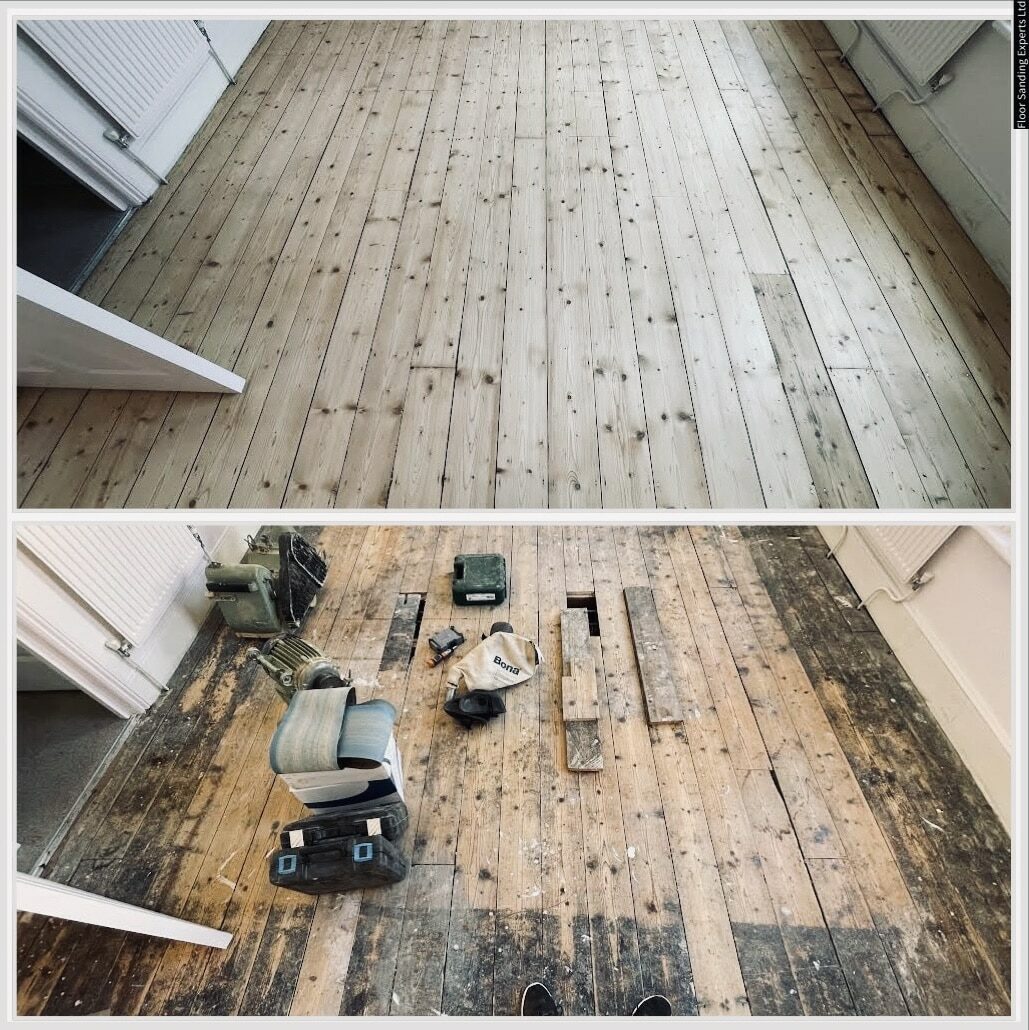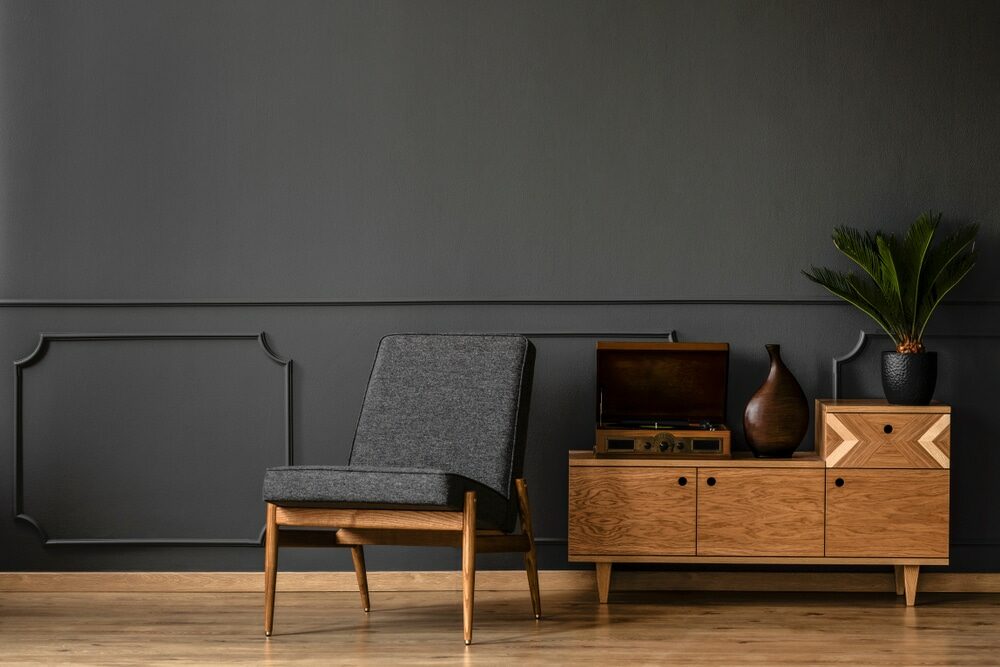London:
Nationwide:
Cost Comparison: Sanding vs Replacing Your Kitchen Worktop
Posted on December 25, 2023
Kitchen Worktop sanding
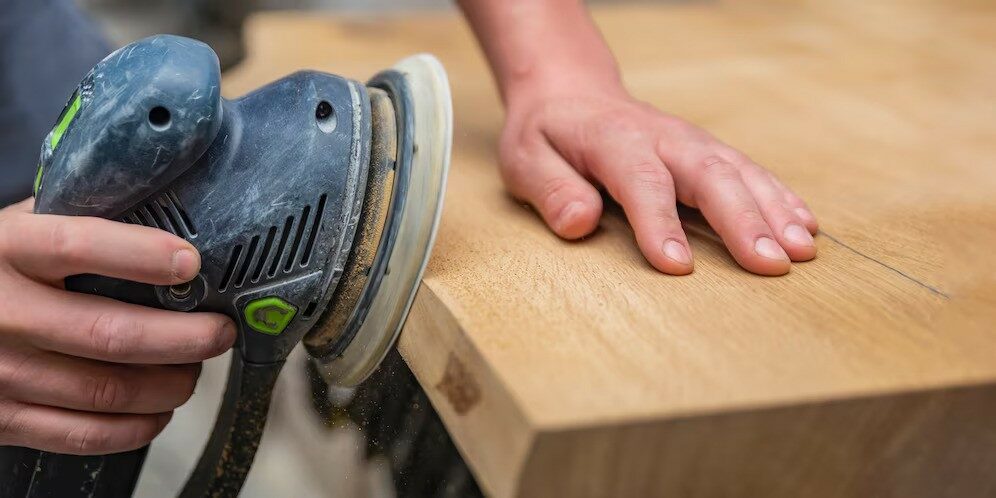
Comparative Analysis: Sanding vs Replacing Kitchen Worktops – Costs Explored
When it comes to maintaining the heart of our homes—the kitchen—the worktop plays a starring role. Not only does it face the daily wear and tear of meal preparations, but it also contributes significantly to the aesthetic appeal and overall value of the space. However, over time, even the sturdiest of worktops can show signs of age and use, leading homeowners to a common crossroads: Should you sand and refinish your existing worktop or completely replace it?
This decision is often influenced by a variety of factors, but cost is undoubtedly one of the most pivotal. In this blog post, we delve into a comprehensive cost comparison between sanding and replacing your kitchen worktop. Our aim is to provide you with a clear understanding of the financial implications of both options, helping you make an informed decision that aligns with your budget and kitchen needs.
We will explore the different types of worktop materials, the signs that indicate whether a worktop needs attention, and a detailed breakdown of the costs involved in both sanding and replacing. This analysis will be supplemented with expert opinions, real-life case studies, and a peek into the long-term financial impacts of each choice. Whether you’re a budget-conscious homeowner, a DIY enthusiast, or someone planning a complete kitchen makeover, this guide is designed to equip you with all the necessary information to navigate this crucial aspect of kitchen maintenance.
So, let’s dive in and unravel the cost mysteries of sanding versus replacing your kitchen worktop!
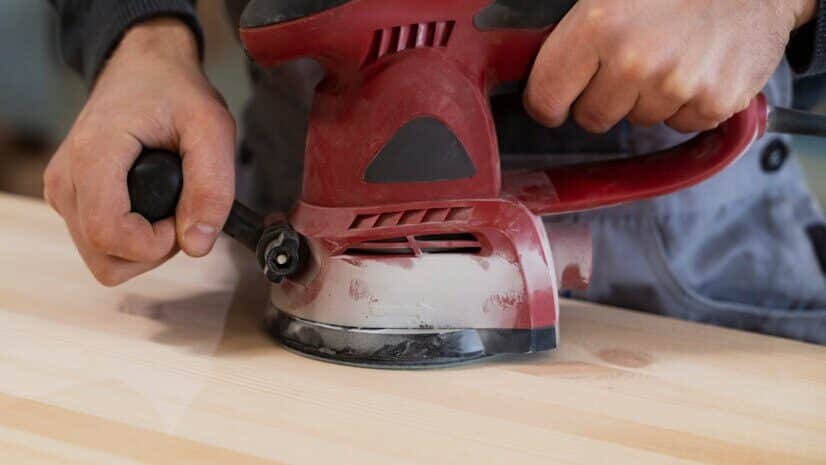
Understanding kitchen worktops
In the realm of kitchen design and maintenance, the worktop is more than just a surface for meal preparation; it’s a focal point of daily life and a key element in the overall aesthetics and functionality of your kitchen. Understanding the different aspects of kitchen worktops is essential to making an informed decision about whether to sand or replace them. Here, we will explore the various types of worktop materials and the common signs of wear and damage.
Types of Worktop Materials
- Laminate is popular for its affordability and variety of designs. Laminate worktops are easy to clean but can be prone to scratches and are not heat-resistant.
- Granite is known for its durability and unique patterns. Granite is heat-resistant and hard-wearing but requires regular sealing to prevent staining.
- Quartz is a composite material that combines natural quartz with resin. It’s non-porous, scratch-resistant, and available in a range of colours, but it can be pricey.
- Wood offers a warm, natural look and can be sanded and refinished. However, wooden worktops are susceptible to water damage and require regular maintenance.
- Stainless steel is favoured in professional kitchens for its hygienic qualities and modern look. It’s highly durable but can show fingerprints and scratches.
- Solid Surface: Materials like corian offer seamless installation and a wide colour palette. They can mimic natural stone and are repairable, but they are not as heat-resistant as stone.
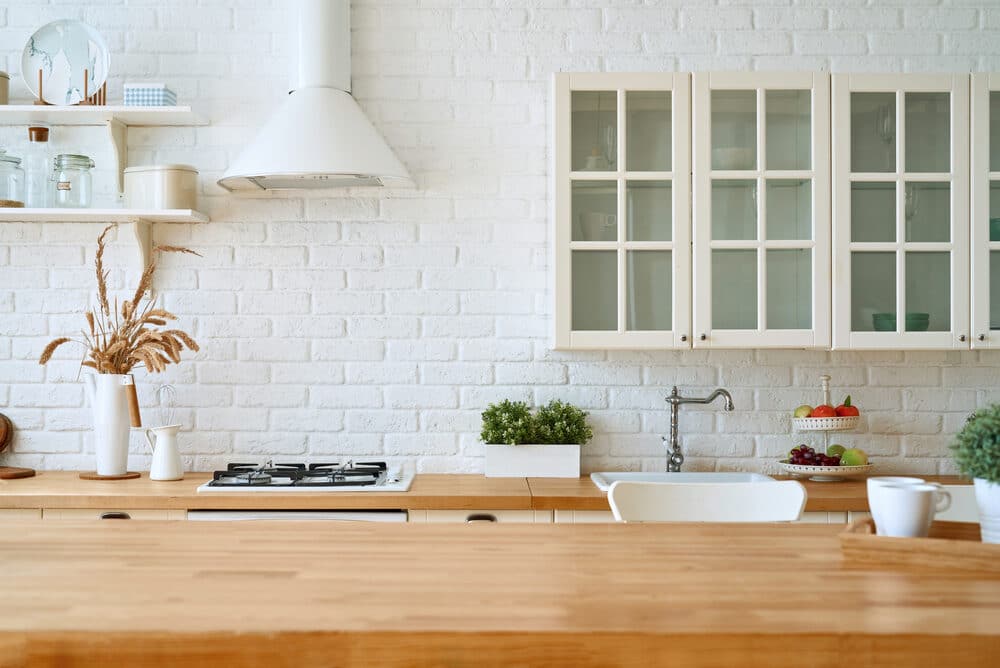
Signs of wear and damage
It’s crucial to recognise when your worktop needs attention. Here are common signs of wear and damage:
- Scratches and Cuts: Daily use can leave marks, especially on softer materials like laminate or wood.
- Stains and Burns: Accidental spills and hot pans can leave unsightly marks.
- Chips and cracks: Heavy objects can damage the surface, particularly in materials like granite or quartz.
- Water Damage: Prolonged exposure to moisture, particularly on wooden worktops, can lead to warping or rot.
- Aesthetic Deterioration: Over time, worktops may simply look outdated or worn, impacting the overall look of your kitchen.
Understanding your worktop material and its condition is the first step in deciding whether sanding kitchen worktop or replacement is the most cost-effective and practical solution for your kitchen.
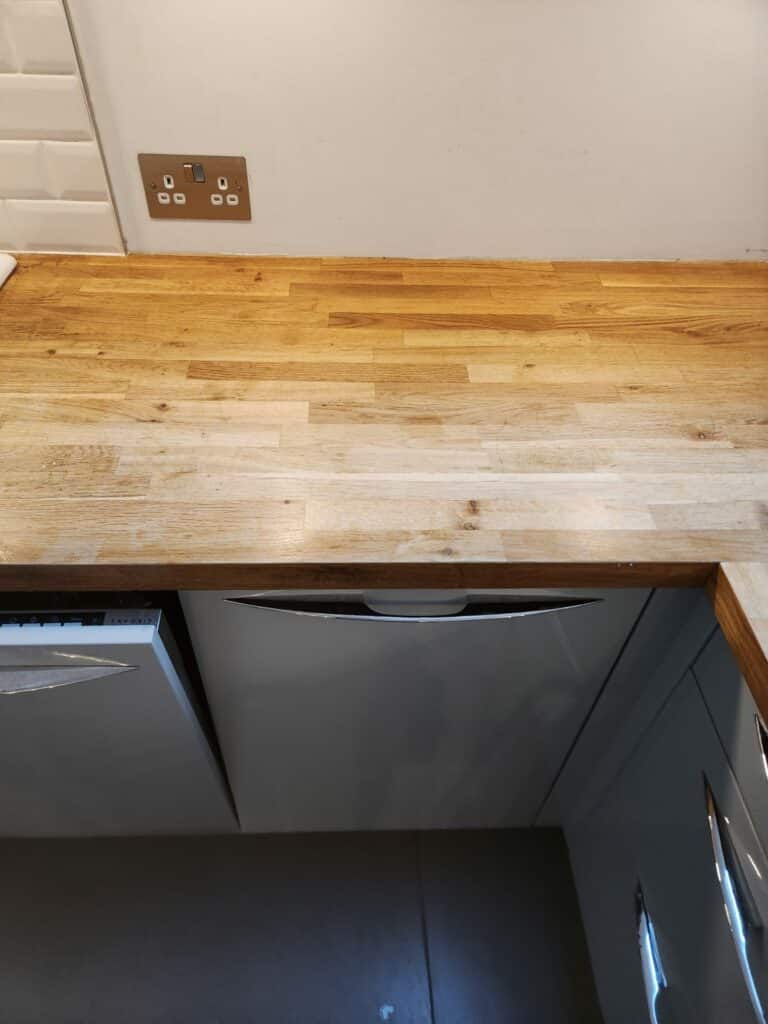
Sanding your worktop
Refinishing a kitchen worktop through sanding can be an effective way to rejuvenate its appearance and extend its lifespan. This process involves removing the top layer of the material to reveal a fresh surface beneath. In this section, we’ll discuss the benefits and drawbacks of sanding, provide an estimate of the costs involved, and guide you through the sanding process.
What is sanding?
Sanding is the process of using abrasive materials to smooth out the surface of the worktop. For materials like wood, it can remove scratches, stains, and signs of wear. In the case of laminate, light sanding can prepare the surface for repainting or refinishing.
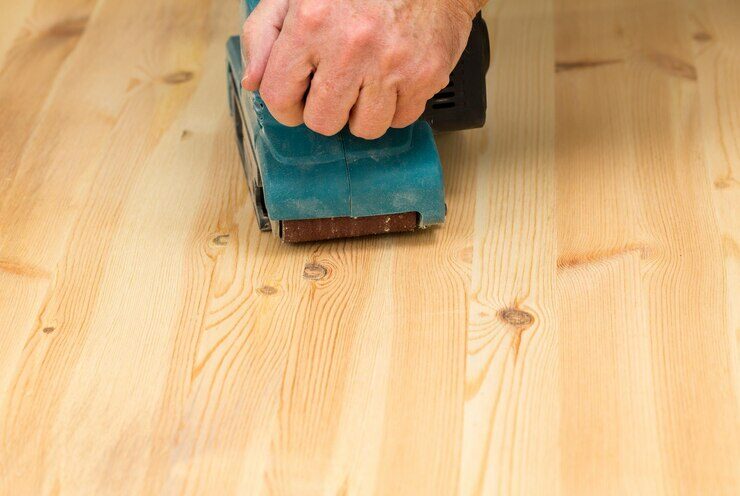
Pros and Cons of Sanding
Pros:
- Cost-effective: generally cheaper than replacing the entire worktop.
- Eco-Friendly: Reduces waste by extending the life of the current worktop.
- Customisation: Offers the opportunity to change the finish or colour.
Cons:
- Material Limitations: Not all worktop materials can be effectively sanded, such as granite or quartz.
- Temporary Solution: May not address deeper structural issues.
- Time and effort: This requires a significant amount of manual labour and skill.

Estimated Costs of Sanding
The cost of sanding a worktop varies depending on the size of the worktop, the material, and whether you do it yourself or hire a professional. DIY sanding can significantly reduce costs, but it requires the right tools and skills. Professional sanding services offer expertise, but at a higher cost.
Step-by-Step Guide to Sanding
- Preparation:
- Clear the worktop and clean the surface.
- Gather the necessary tools: sandpaper, sander, safety gear, etc.
- Sanding:
- Start with a coarse-grit sandpaper to remove the top layer.
- Progress to finer grits for a smooth finish.
- Cleaning:
- Remove all dust and debris from the surface after sanding.
- Finishing:
- Apply a sealant or finish appropriate for the material.
- Maintenance:
- Regularly clean and maintain the refinished surface to prolong its life.
Sanding your kitchen worktop can be a rewarding DIY project or a cost-effective service provided by professionals. Understanding your worktop’s material and condition is crucial in determining whether sanding is a viable option.

Replacing your worktop
While sanding is a viable option for refreshing a kitchen worktop, sometimes the extent of damage or the desire for a completely new look necessitates a full replacement. This section discusses the reasons for choosing replacement over sanding, outlines the pros and cons, estimates the costs, and guides you through the process of selecting a new worktop material.
Reasons to Consider Replacement
- Extensive Damage: When worktops have deep cracks, burns, or water damage, sanding may not be sufficient.
- Material Upgrade: Desire for a more durable, higher-quality, or different style of material.
- Kitchen Remodel: Part of a larger kitchen renovation project.
- Increased Home Value: Upgrading to a premium worktop can enhance the overall value of your home.
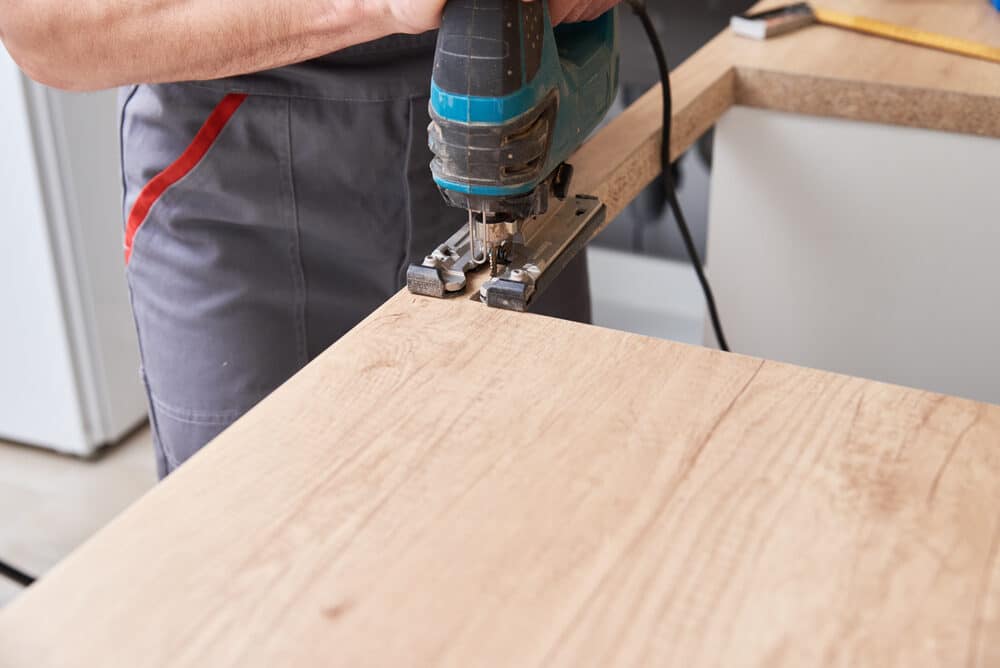
Pros and Cons of Replacement
Pros:
- Longevity: New worktops can last for many years, offering better long-term value.
- Variety of Choices: There is a wide range of materials, colours, and designs to choose from.
- Modernization: Opportunity to update the kitchen’s look and increase functionality.
Cons:
- Higher Cost: Generally more expensive than sanding and refinishing.
- Installation Time: The replacement process can be time-consuming and disruptive.
- Environmental Impact: Generates more waste compared to refinishing an existing worktop.
Estimated Costs of Replacement
The cost of replacing a kitchen worktop varies widely based on the material chosen, the size of the worktop, and installation costs. Budget-friendly options like laminate can be quite affordable, whereas materials like granite or quartz are on the higher end. Including installation, the price can range from a few hundred to several thousand Pounds.

Choosing the Right Material for Replacement
When selecting a new worktop material, consider the following factors:
- Budget: How much are you willing to invest?
- Usage: Consider the level of wear and tear your worktop will endure.
- Aesthetic: What style complements your kitchen’s design?
- Maintenance: How much time and effort are you willing to dedicate to upkeep?
Popular materials include granite, quartz, wood, laminate, and stainless steel, each offering unique benefits and drawbacks.
The Replacement Process
- Consultation: Work with a professional to assess your needs and get accurate measurements.
- Material Selection: Choose the material that best fits your requirements and budget.
- Removal of Old Worktop: Safely remove and dispose of the existing worktop.
- Installation: professional installation of the new worktop.
- Finishing Touches: Apply sealants if necessary and ensure proper fit and finish.
Replacing your kitchen worktop is a significant decision that can transform the look and feel of your kitchen. By considering the factors outlined above, you can make an informed choice that balances cost, style, and functionality.
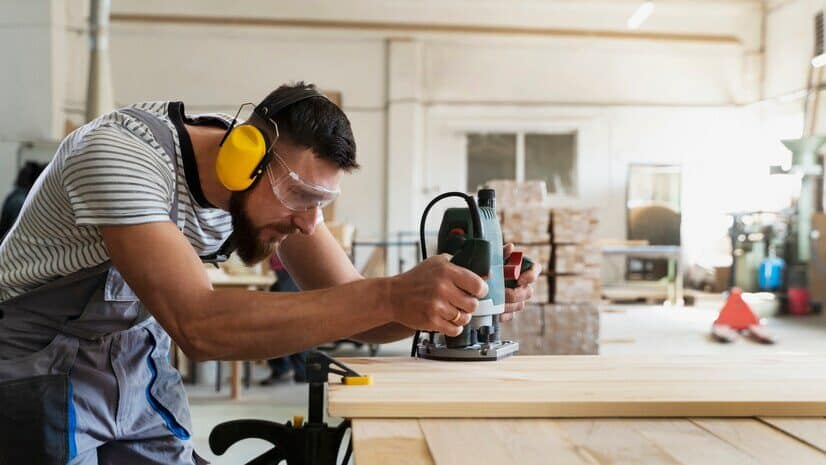
Cost Comparison: Sanding vs. Replacing Your Kitchen Worktop
Making the right decision between sanding kitchen worktop and replacing your kitchen worktop involves a careful examination of the costs involved in each option. This section provides a detailed cost comparison, considering both the immediate financial implications and the long-term considerations.
Direct Cost Analysis
- Sanding Costs:
- DIY Approach: The cost of sandpaper, sealants, and rental of a sander (if needed). Typically, this can range from a few tens to a couple of hundred dollars, depending on the size of the worktop and the materials needed.
- Professional sanding includes labour costs. Professional services can range from £200 to £600, depending on the worktop’s size and condition.
- Replacement Costs:
- Material Cost: This varies greatly based on the type of material. Laminate is the most budget-friendly, while materials like granite and quartz are at the higher end. Prices can range from £30 per square foot for laminate to £100 or more for high-end materials.
- Installation Cost: Professional installation can add significantly to the cost, ranging from £200 to over £1000, depending on the complexity of the job and the worktop’s size.
Long-Term Financial Implications
- Sanding:
- Increased Lifespan: This extends the life of your current worktop, delaying the need for a replacement.
- Maintenance Costs: Ongoing maintenance might be required more frequently than with a new worktop.
- Replacement:
- Durability: Newer materials may offer greater durability and longer lifespans, reducing the need for future replacements.
- Value Addition: High-quality materials can increase the overall value of your property.
Impact on Property Value
- Sanding can improve the appearance but might not significantly increase home value unless part of a comprehensive renovation.
- Replacement: Choosing a high-quality worktop material can be a selling point and potentially increase the home’s market value.
Conclusion
Navigating the decision between sanding kitchen worktop and replacing your kitchen worktop is no small task. It involves a careful balance between cost considerations, the extent of wear and damage, aesthetic desires, and long-term implications for your home. Through this blog post, we’ve explored the nuances of each option, providing insights into their respective costs, benefits, and drawbacks.
Sanding your kitchen worktop emerges as a cost-effective solution for superficial damages, offering a way to refresh your kitchen without a hefty investment. It’s an environmentally friendly choice that extends the life of your current worktop and can be particularly appealing for DIY enthusiasts or those working within a tight budget.
On the other hand, replacing your worktop represents a more significant investment but comes with the promise of transforming your kitchen’s aesthetic and functionality and potentially increasing your home’s value. It’s a suitable option for extensively damaged worktops or as part of a broader kitchen renovation project.
Ultimately, the decision hinges on your specific situation. If your worktop has minor wear and you’re looking for a budget-friendly update, sanding could be your best bet. However, if you’re dealing with extensive damage, craving a complete change, or planning a full kitchen remodel, replacing your worktop might be the more prudent choice.
Remember, your kitchen worktop is more than just a surface; it’s a central component of your kitchen’s personality and functionality. Whether you choose to sand or replace, the goal is to ensure that it continues to be a space that you love and enjoy for years to come.
We hope this guide has provided you with valuable insights to make an informed decision about your kitchen worktop. Should you have any further questions or need more specific advice, feel free to reach out to kitchen renovation experts or local contractors who can offer tailored recommendations based on your unique needs.
Happy renovating!

Sanding
We provide virtually dust-free sanding with our continuous belt machinery with mobile extraction units, giving you a safer environment for your family.
Oiling
This organic finish not only adds beauty to your home but also has exceptional water-repellent characteristics, making it easier to clean and maintain.
Waxing
This natural floor finish offers the softest and most mellow appearance – and leaves your floor able to breath.
Buffing
Using soft buffing machines (and hand-polishing where required) will bring a wonderful sheen to your newly-finished floor.
Repairs
We offer a full assessment of your wooden floors to determine what repairs are needed to provide the perfect working surface for the later stages of sanding, staining and sealing.
Restoration
We offer a comprehensive restoration process designed to address floors that are improperly fitted or damaged over time through wear and tear.
Request a fixed price quote for your wood floor restoration now
Simply enter your postcode below to get started.
Services
Wood Floor Sanding Wood Floor Restoration Wood Floor Scratch Repair Squeaky Wood Floor Repair Parquet Floor Sanding Parquet Floor Restoration Commercial Floor Sanding Church Floor Sanding Community Centre Floor Sanding School Floor Sanding Gap Filling Gap Filling with ResinCopyright © Mr Sander®
Privacy & Cookies Terms & Conditions Complaints Procedure Cancellation Rights Sitemap